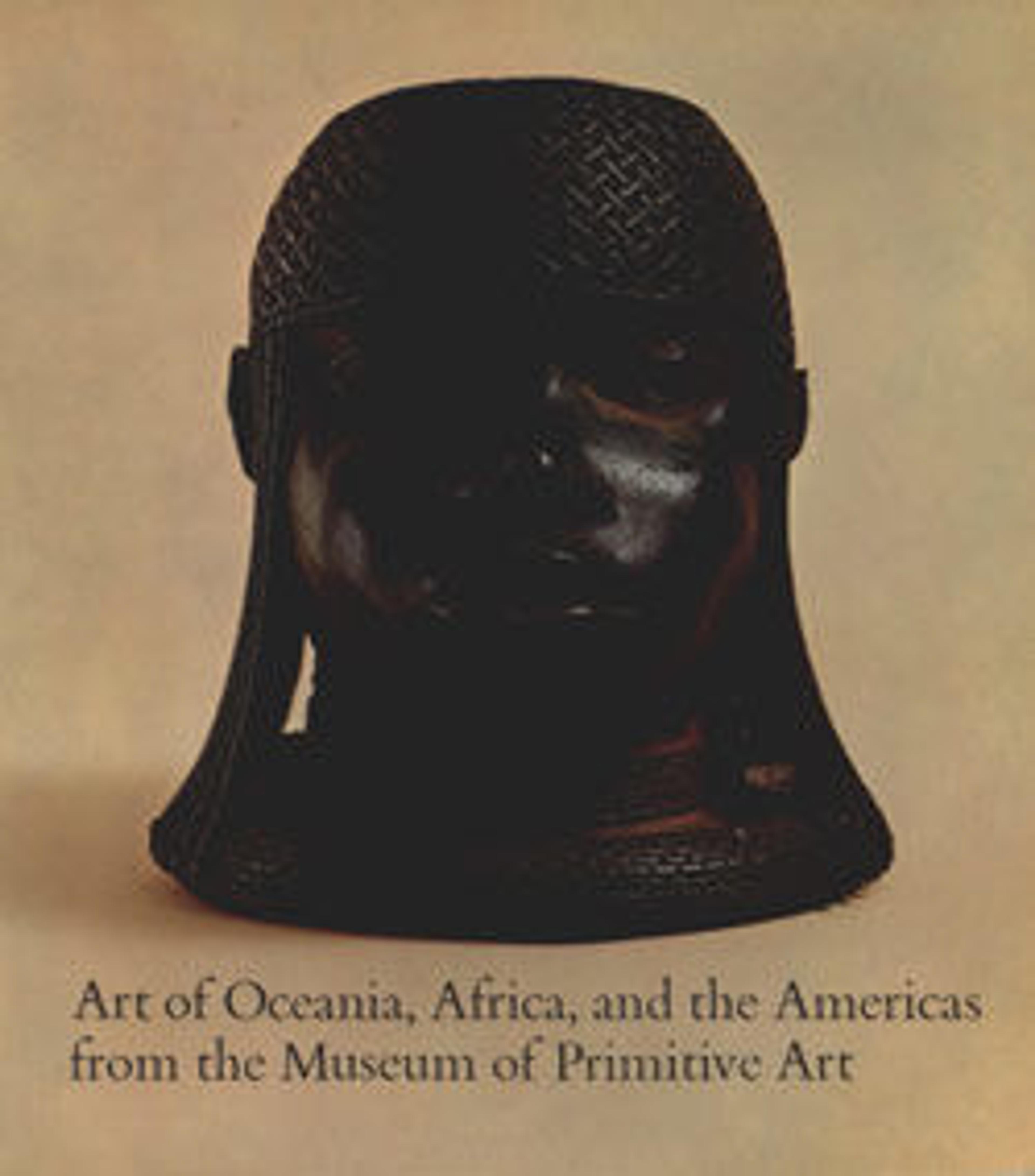Helmet crest from a nja masquerade
In the socially and politically stratified polities of the Grassfields Kingdoms of Cameroon, the display and ownership of masks are important indicators of privilege and prestige.
"Kwifoyn", a regulatory society whose members derive their authority from the Fon, or king, oversees all levels of criminal justice and functions as an executive branch of government. "Kwifoyn" is organized into ranked lodges; membership requires the payment of prescribed fees commensurate with each lodge's relative status. Among the privileges of membership is patronage of mask forms in celebrations performed in honor of its members. "Kwifoyn" also controls the right to license the replication of mask forms to lineage groups willing to pay a fee.
Masks distinguished by the application of beads, cowrie shells, or brass sheathing are the prerogative of the Fon and function under the joint authority of the palace and regulatory society. This mask, which bears a rich accumulation of these costly and prestigious materials, also depicts the symbolically potent imagery of a stylized spider, associated with wisdom, in the headdress.
Distinguished individuals are honored by the appearance of masks such as this one at funerals and related events. Surrounding the burial and commemoration of titleholders, these celebrations provide occasions for the masks to emerge from their guarded storerooms and to be danced before the entire population. Another occasion for the public display of masks and other prestige arts is a palace-sponsored festivity known as "Nja", the Fon's dance. This annual celebration coincides with the conclusion of the main harvest in late December or early January.
"Kwifoyn", a regulatory society whose members derive their authority from the Fon, or king, oversees all levels of criminal justice and functions as an executive branch of government. "Kwifoyn" is organized into ranked lodges; membership requires the payment of prescribed fees commensurate with each lodge's relative status. Among the privileges of membership is patronage of mask forms in celebrations performed in honor of its members. "Kwifoyn" also controls the right to license the replication of mask forms to lineage groups willing to pay a fee.
Masks distinguished by the application of beads, cowrie shells, or brass sheathing are the prerogative of the Fon and function under the joint authority of the palace and regulatory society. This mask, which bears a rich accumulation of these costly and prestigious materials, also depicts the symbolically potent imagery of a stylized spider, associated with wisdom, in the headdress.
Distinguished individuals are honored by the appearance of masks such as this one at funerals and related events. Surrounding the burial and commemoration of titleholders, these celebrations provide occasions for the masks to emerge from their guarded storerooms and to be danced before the entire population. Another occasion for the public display of masks and other prestige arts is a palace-sponsored festivity known as "Nja", the Fon's dance. This annual celebration coincides with the conclusion of the main harvest in late December or early January.
Artwork Details
- Title: Helmet crest from a nja masquerade
- Artist: Grassfields artists
- Date: ca. 1800–80
- Geography: Cameroon, Bamum, Foumban
- Culture: Bamum kingdom
- Medium: Wood, copper, glass beads, raffia palm, cowrie shells
- Dimensions: H. 26 x W. 14 x D. 10 3/4 in. (66 x 35.6 x 27.3 cm)
- Classification: Beads-Sculpture
- Credit Line: The Michael C. Rockefeller Memorial Collection, Purchase, Nelson A. Rockefeller Gift, 1967
- Object Number: 1978.412.560
- Curatorial Department: The Michael C. Rockefeller Wing
More Artwork
Research Resources
The Met provides unparalleled resources for research and welcomes an international community of students and scholars. The Met's Open Access API is where creators and researchers can connect to the The Met collection. Open Access data and public domain images are available for unrestricted commercial and noncommercial use without permission or fee.
To request images under copyright and other restrictions, please use this Image Request form.
Feedback
We continue to research and examine historical and cultural context for objects in The Met collection. If you have comments or questions about this object record, please contact us using the form below. The Museum looks forward to receiving your comments.
